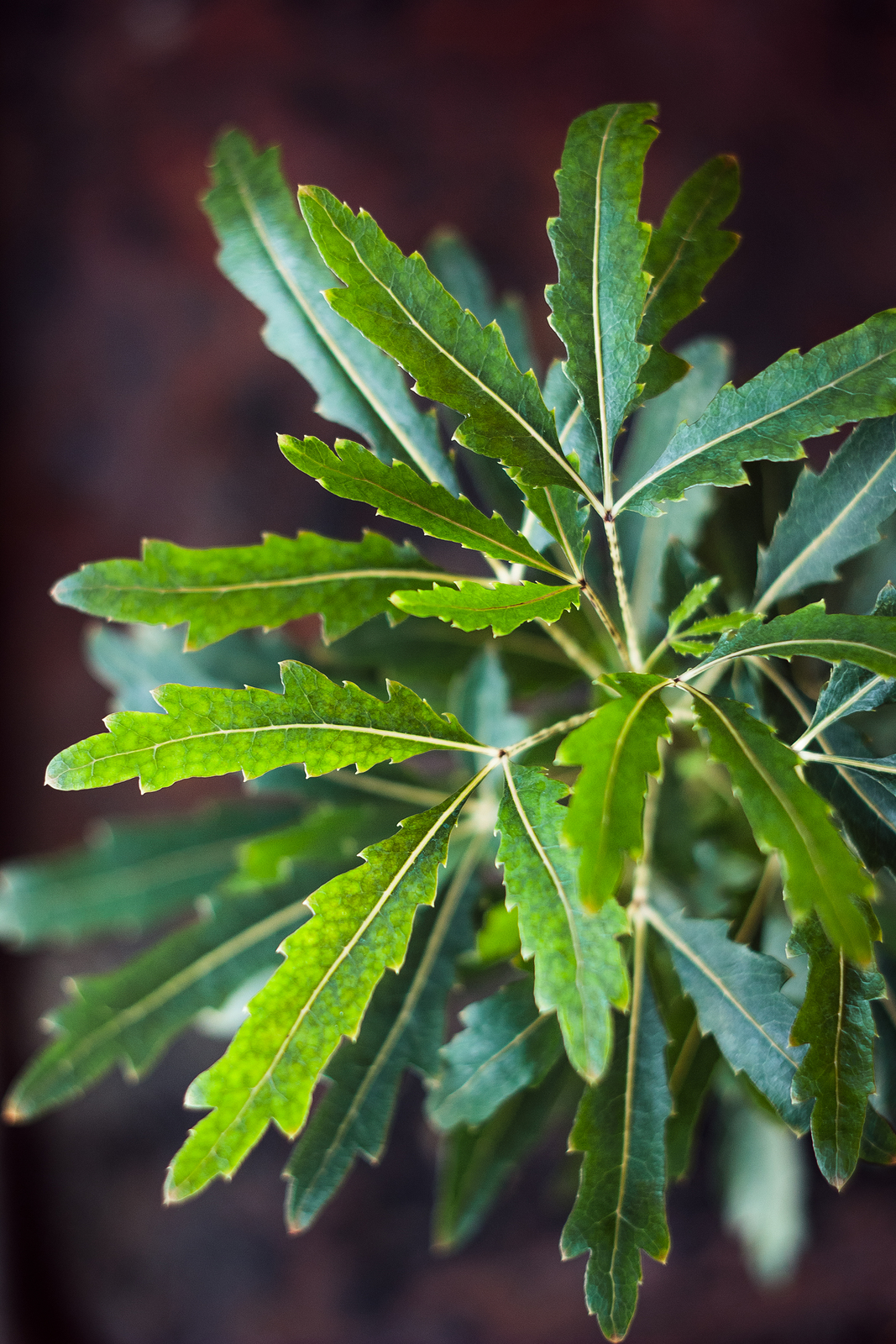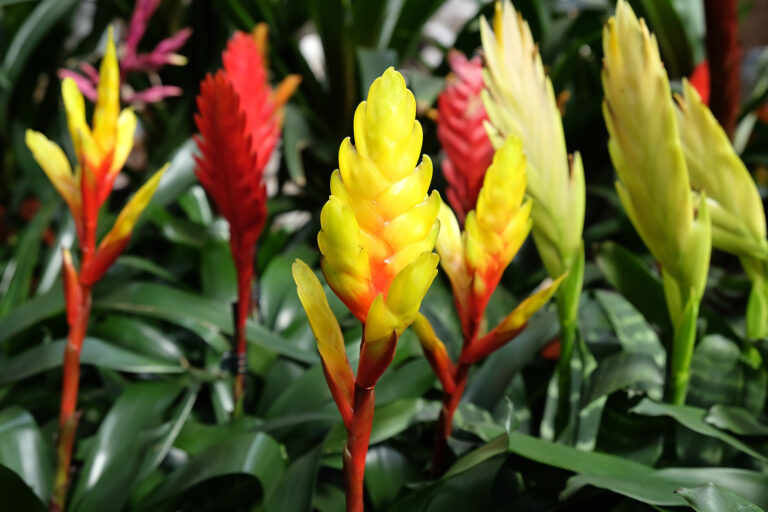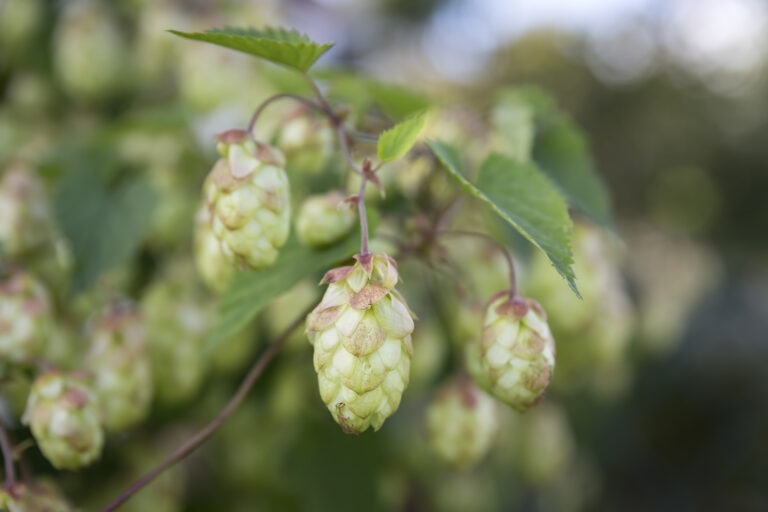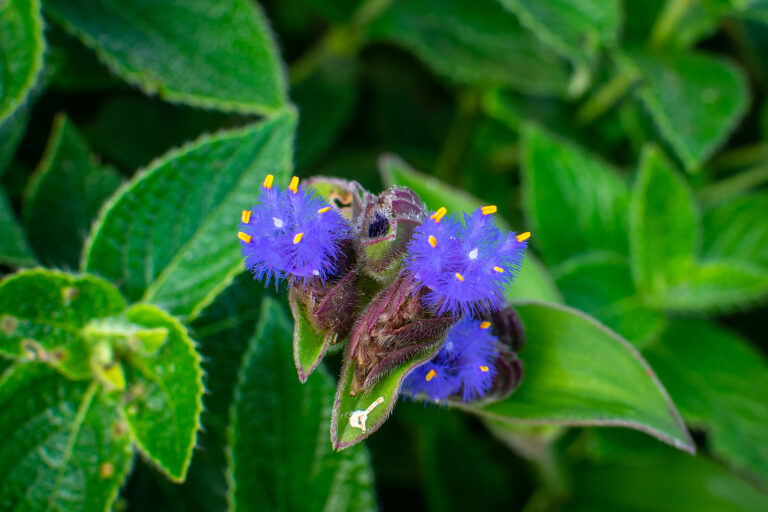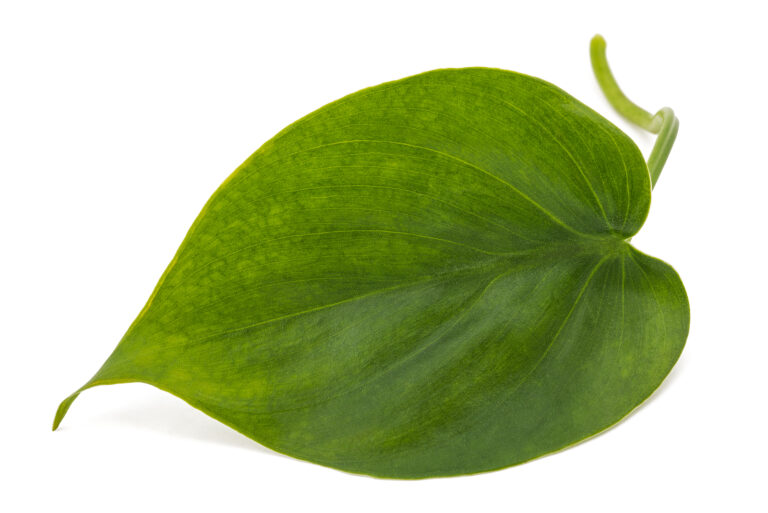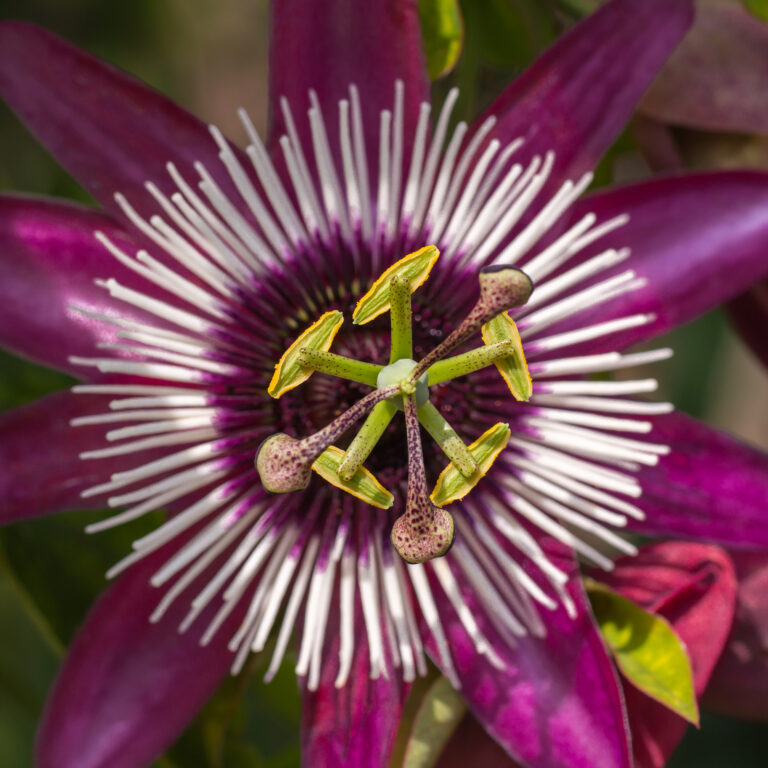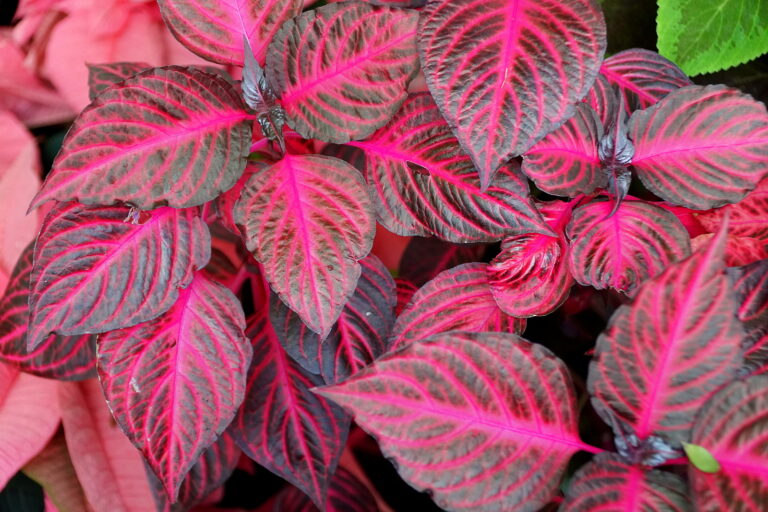How to Grow Aralia — Polyscias
Polyscias–commonly called Aralia–is a fast-growing plant ideal for cool spots. Aralias can be fussy; they need fresh air, but no drafts, good light, but not direct sun, and enough water, but not too much. If aralia is doing well, don’t move it.
Polyscias grow well in a mixture of fibrous loam, leafmold, and a bit of aged compost with sand and charcoal to make it porous. They make attractive foliage plants for indoors.
Polyscias are propagated by cuttings of the leafy tops or heel cuttings from an old cut-back plant.
The genus Polyscias includes tropical shrubs and trees. There are about 100 species in the genus. Polyscias is native to tropical regions of Africa, Asia, and the Pacific.
Get to know Polyscias
- Plant type: Subtropical shrub or small tree or houseplant
- Growing Zones and range: Zones 7-11
- Hardiness: Tender
- Optimal growing temperature: day 70° to 80°F (21°-27°C), night 62° to 68°F (17°-20°C)
- Height and width: 3 to 15 feet (1-4.5m) tall, 3 to 8 feet (1-2.5m) depending on the type
- Foliage: Deep green divided leaves
- Uses: Shrub or hedge in tropical Florida and Hawaii; houseplant in most regions
- Common name: Aralia
- Botanical name: Polyscias spp.
- Family: Araliaceae
- Origin: Tropical regions of Africa, Asia, and the Pacific
Where to plant Polyscias
- Keep in bright light away from direct sun.
- Polyscias needs to be kept warm, a minimum of 65°F (18°C) in winter.
- Plant Polyscias in a commercial potting mix for houseplants.
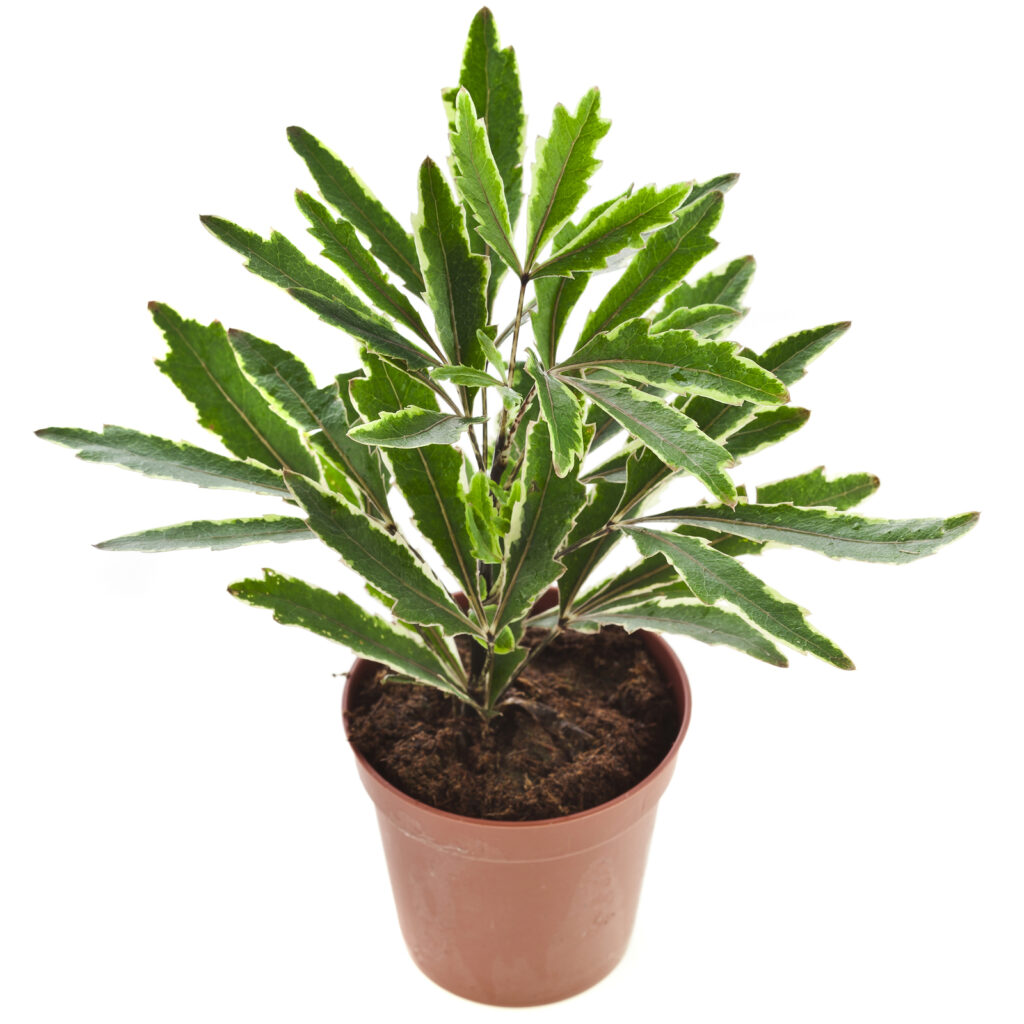
How to water and feed Polyscias
- Keep soil moist most of the year and on the dry side in winter when growth is less active.
- Fertilize Polyscias with half-strength 10-10-10 fertilizer with each watering.
Polyscias care
- Polyscias needs ample humidity or it will drop its leaves.
- Polyscias drops its leaves when conditions are less than ideal or when conditions change.
Growing Polyscias as a houseplant
- Polyscias balfouriana, P. fruticosa, P. guilfoylei, and P. paniculata are grown as houseplants.
- Polyscias needs bright light, warm room temperature, and high humidity.
- The soil should be allowed to dry to the touch between waterings; wet soil can cause root rot.
- Fertilizer should be applied once a month from early spring through late fall.
Polyscias pests and diseases
- Polyscias are susceptible to attack by aphids, mealybugs, scale insects, and spider mites.
- Polyscias can get root rot.
Polyscias propagation
- Polyscias can be propagated from stem cuttings and repotted in an all-purpose soil mix.
Polyscias varieties to grow
- Polyscias balfouriana, Balfour aralia. Grows to 6 feet tall on woody stems with gray speckles; leaves are glossy dark green and shell-shaped with scalloped edges; leaves divide into 3 sections; cultivar ‘Marginata’ has gray-green leaves with jagged white edges.
- P. fruticosa also called Ming aralia. Grows to 8 feet in a treelike form; single woody stem bears purple-green lealstalks and lavy, finely divided green leaves.
- P. guilfoylei, geranium leaf aralia. Grows to 3 feet tall; oval leaves to 16 inches long, lacy and bright green; cultivar ‘Victoriae’ has smaller leaves and white edges.
- P. paniculata. Grows to 4 feet tall in shrublike form; leaves are willoy and shiny dark green; cutlivar ‘Variegata’ has leaves variegated dark light green with white makrings.
- P. scutellaria also called dinner-plate aralia.

